Talking Divine Daffodil Varieties With Anne Wright And Janet Hickman
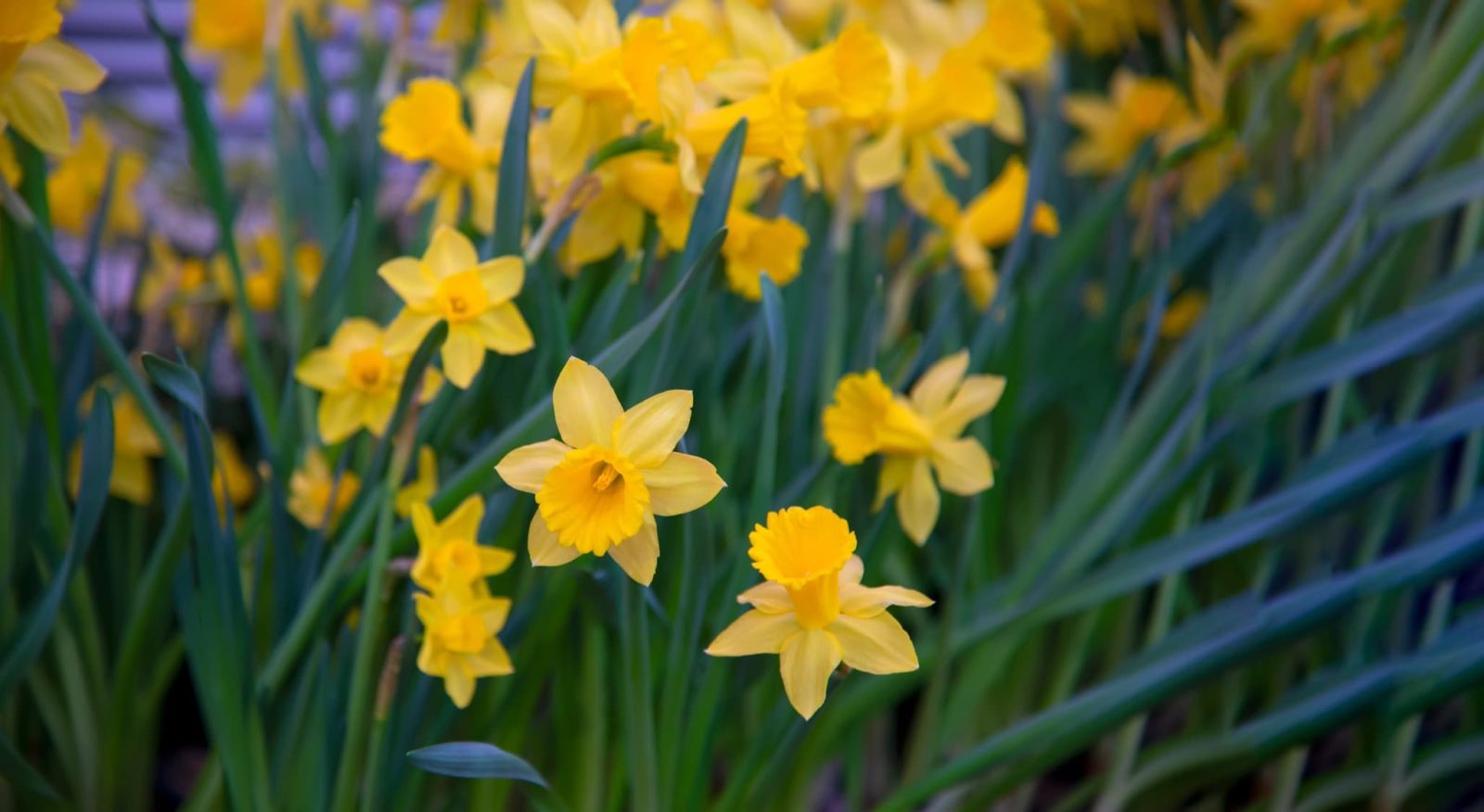
Reviewed By COLIN SKELLY

Colin is a Horticulturist and Horticultural Consultant with experience in a range of practical and managerial roles across heritage, commercial and public horticulture. He holds the Royal Horticultural Society’s Master of Horticulture award and has a particular interest in horticultural ecology and naturalistic planting for habitat and climate resilience.
Contributions From ANNE WRIGHT

Anne is the owner of Dryad Nursery, a Daffodil and Snowdrop specialist and nursery based in North Yorkshire here in the UK.

Janet is an accredited judge and judge instructor for national and local shows; she has also received the 2022 American Daffodil Society Silver Medal in recognition of her service.
IN THIS GUIDE
DAFFODIL GUIDES
Blindness
Container Growing
Varieties
Though most daffodils are yellow trumpet-shaped blooms just as they are usually envisaged, this flower is rather more diverse in its shapes, sizes and colours than commonly known or conceived.
Some varieties have pronounced, protruding trumpets while others have dainty cups.
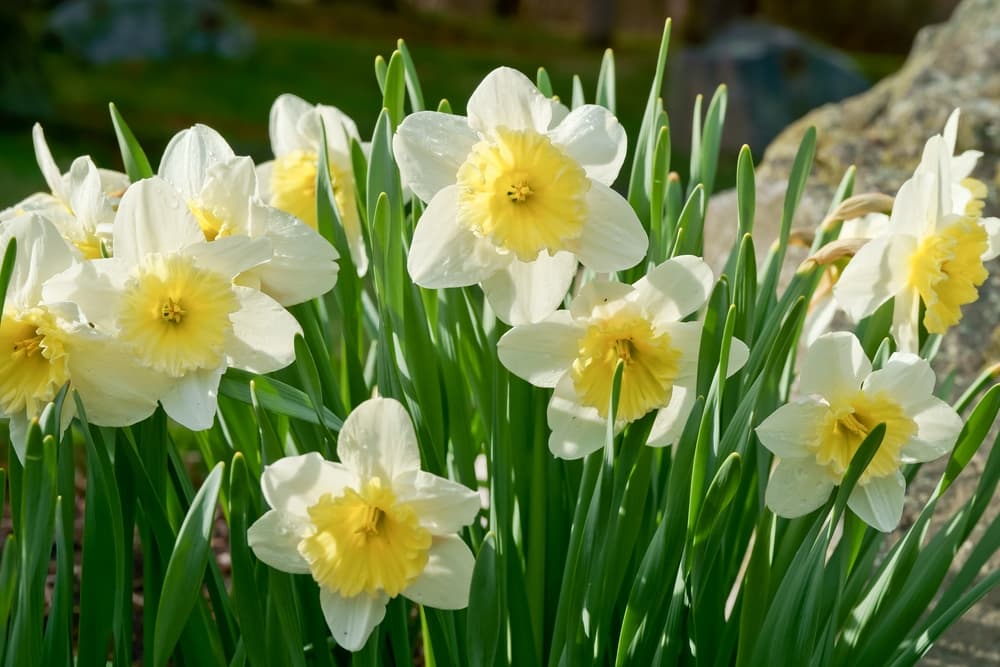
‘Paperwhite’ daffodils reach heights of 80cm; compare that to N. asturiensis which typically stands at 10cm – a quarter of the length of ‘Paperwhite’ leaves!
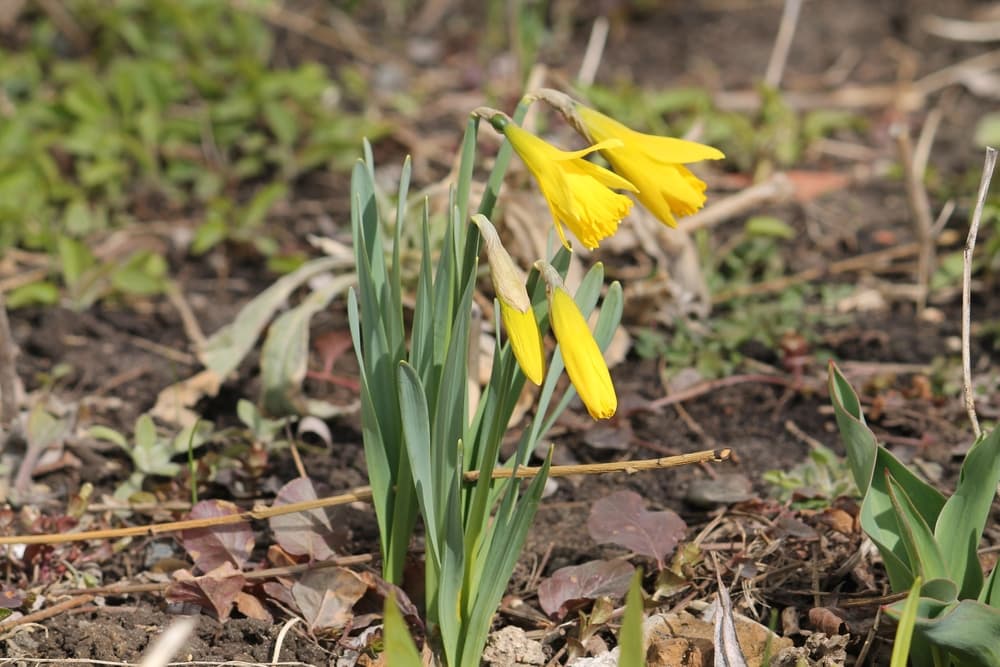
And talking of ‘Paperwhite’ – daffodils grace gardens as well as meadows in hues of yellow, orange, cream, pink, and in pure white.
Besides that, some cultivars are bi-coloured, such as white and yellow, white and orange, and yellow and orange.
Adding further diversity to the flower, even their orientation varies by species and cultivar.

The flowers of different daffodil species and cultivars are variously pendent, horizontal, or erect.
There are 74 species of Narcissus and, as for hybrids and cultivars, many thousands have been registered.1Narcissus. (n.d.). Plants of the World Online. Retrieved May 22, 2023, from https://powo.science.kew.org/taxon/urn:lsid:ipni.org:names:1558-1#children
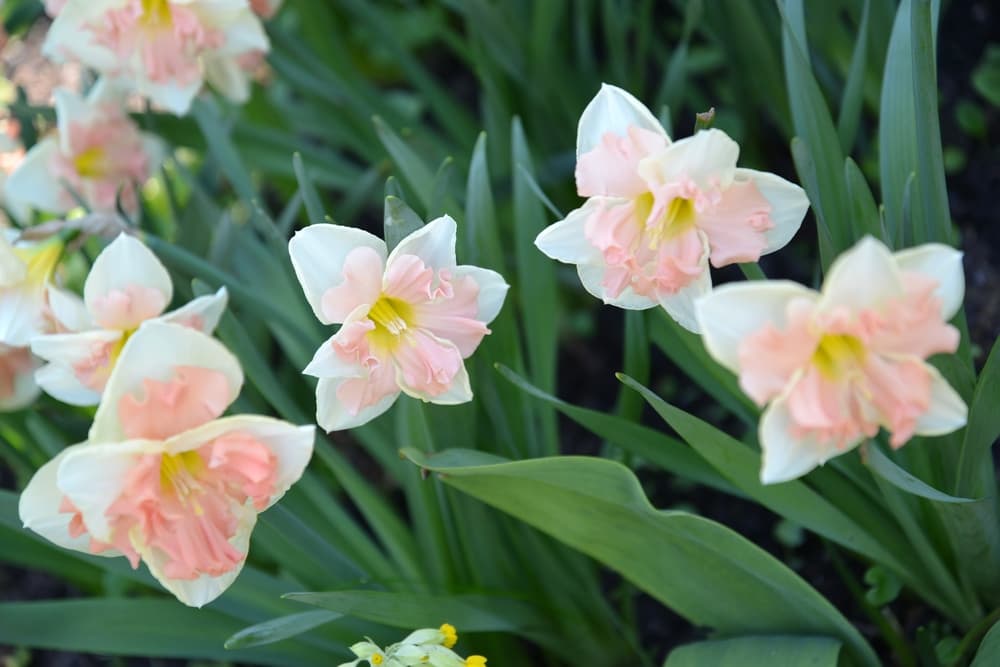
The Royal Horticultural Society arranges cultivars into 13 divisions with about half of them defined by their respective coronas with Division 1 being Trumpet Daffodils.2Horticultural classification of daffodils. (n.d.). Royal Horticultural Society. Retrieved March 14, 2023, from https://www.rhs.org.uk/plants/pdfs/plant-registration-forms/daffhortclass.pdf
Daffodils inter-breed and hybridise relatively freely; moreover, horticulturists come up with numerous new cultivars every year.
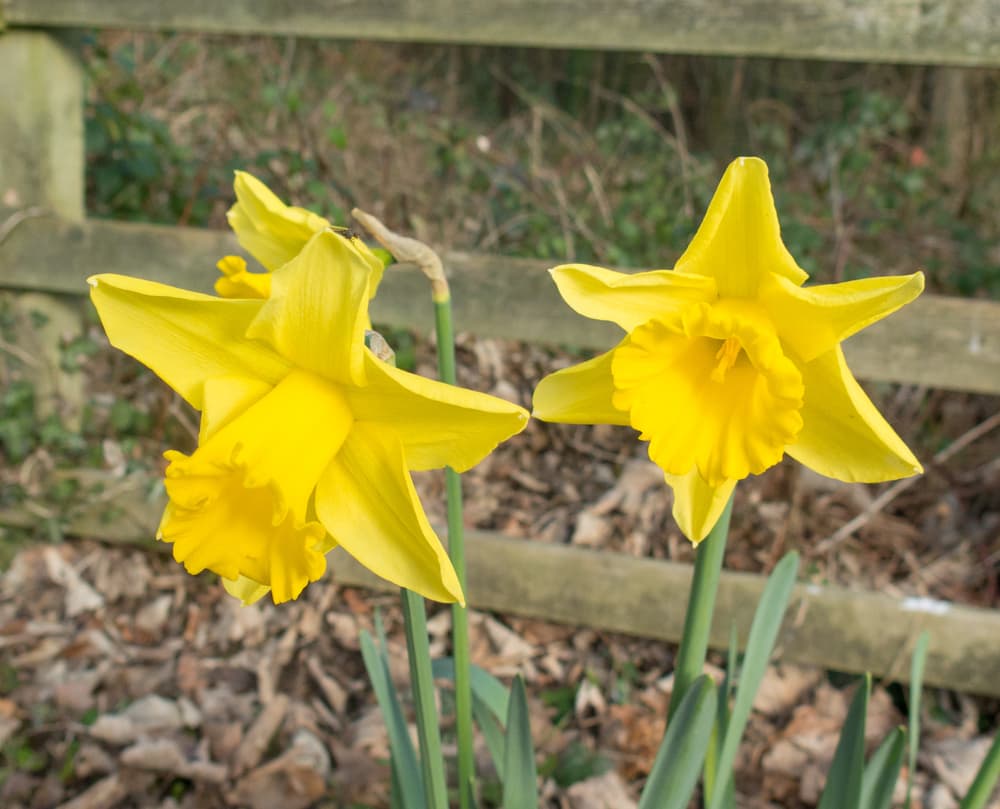
Expert-Chosen Varieties
We asked Anne Wright from Dryad Nursery and Janet Hickman from the American Daffodil Society to share a few of their favourite varieties with us.
“I have too many favourites,” says Janet.
“I like the Historic daffodils, which are those that are registered with the RHS or known to be in gardens before 1940, for their stories, their delicacy and their hardiness.”
“Some examples would be ‘Queen of Spain’ and ‘Thalia’.”
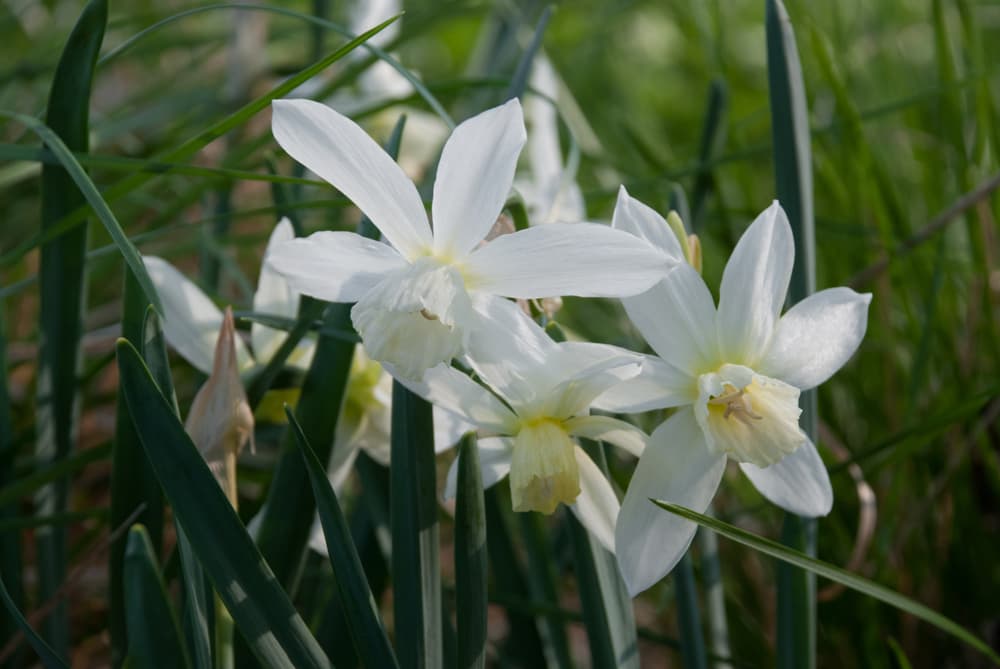
“I also love miniatures like ‘Itsy Bitsy Splitsy’ and ‘Hawera’ for their close-up beauty and their ease of growing in pots and small spaces.
“My favourite daffodil to grow for fragrance is the double-flowered ‘Erlicheer’. I appreciate ‘Ice Follies’ for its early spring appearance and the poet daffodils like ‘Molly Malone Cook’ for extending the season longer.
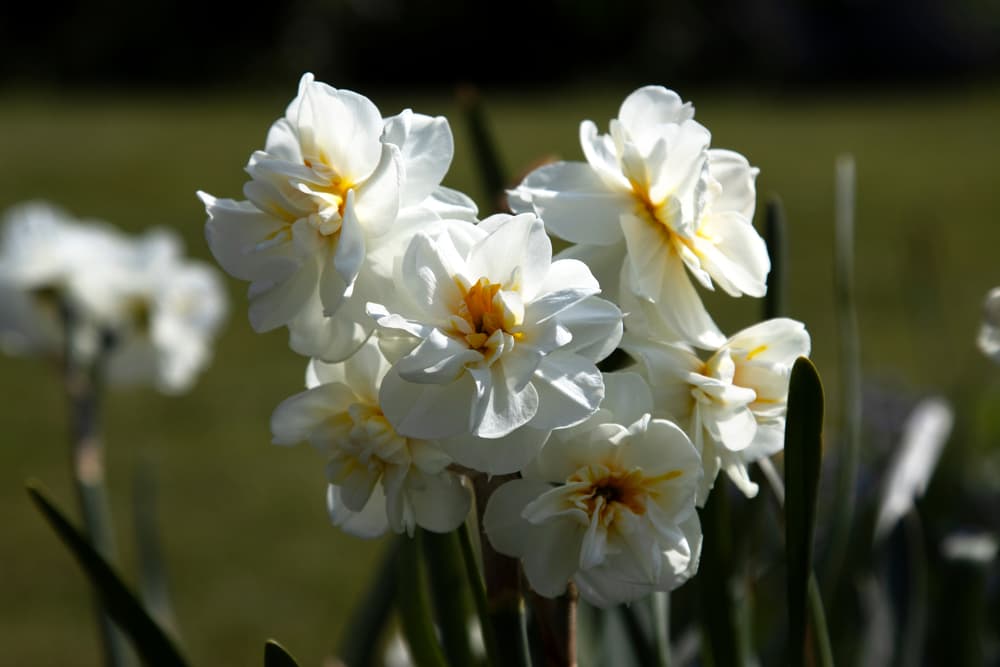
“I’m intrigued by recently-developed green daffodils like ‘Mesa Verde’.
“Standard show-winning daffodils like ‘Rapture’, ‘Sweetness’, ‘Fragrant Rose’ and ‘New Penny’ top many people’s lists of favourites, but each new catalogue or sales list tempts with new favourites like the delicate white and pink ‘Dainty Tale’.”
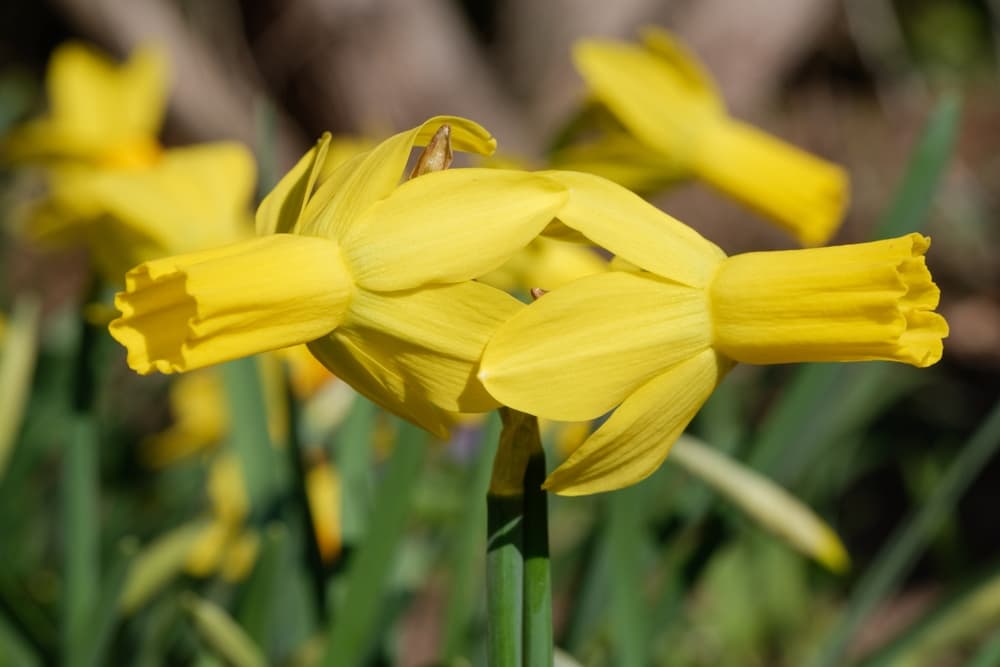
So, what are some of Anne’s favourites?
For perennials that add pleasing colour to the garden, she recommends the varieties:
- ‘Jenny’
- ‘Lemon Silk’
- ‘Lucifer’
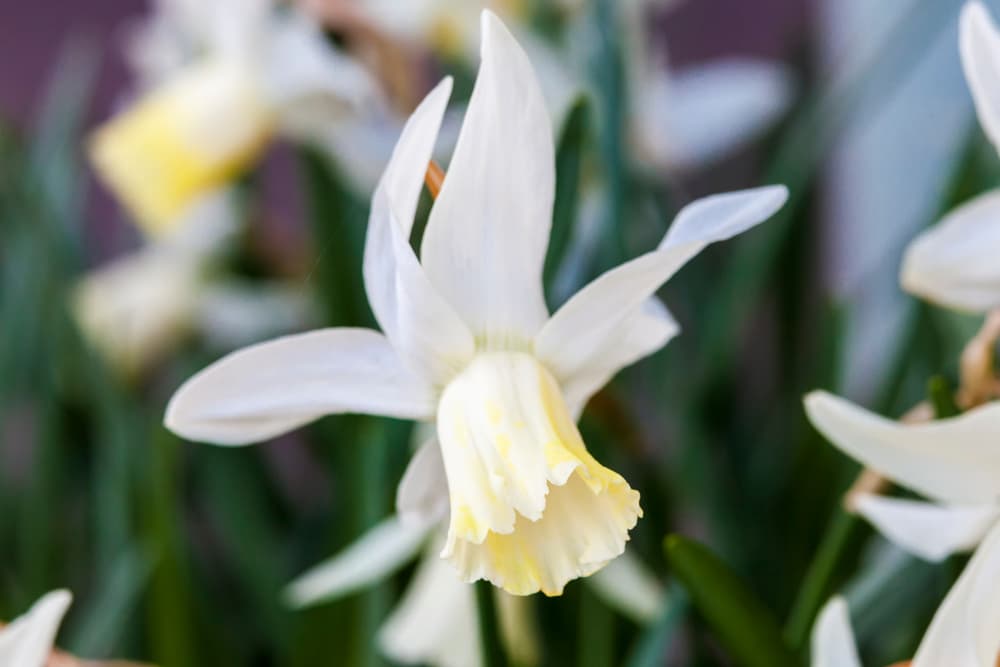
For cut flowers, Anne’s top picks are:
- ‘Little Dryad’
- ‘Giselle’
- ‘Trumpet Voluntary’
“Catalogues of Narcissus are like trying to choose in a sweet shop when it all looks delicious,” shares Master Horticulturist Colin Skelly.
“Over the years, I have narrowed down my preference to early flowering miniature cultivars largely because I grow daffodils in pots for early seasonal display and because wind can tend to flatten taller cultivars (usually when they are just looking their best).
“Narrow down your selections by thinking about how and where you will grow them and when you want them to flower.”

In terms of our favourites, it is hardly possible to cover them all so we go beyond the standard-bearer, ‘Dutchmaster’ or ‘King Alfred’, and list some that are more unusual.
Our choices in the following top ten list are not as widespread or as well-known as ‘Dutchmasters’ yet they are super-attractive, each one in its own way.
These favourites are selected without regard to range or diversity and solely on the basis of artistic appeal. In no particular order:
1) ‘Scilly White’
The solid white tepals and solid orange cup of this horizontally-oriented variety stare you in the face and projects an atypically bold and brassy air.
2) Tahiti Daffodil
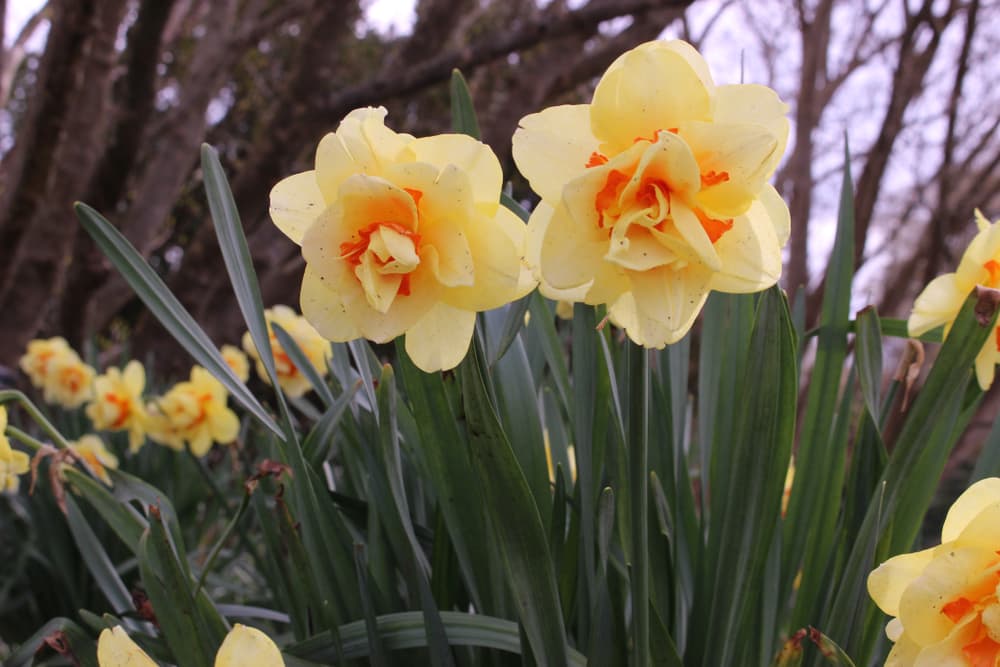
This very symmetrical double flower has wafer-ish tepals but the bewitching feature is that both the tepals and cup are a buttery hue with central flecks and splashes of orange.
3) New Baby Daffodil
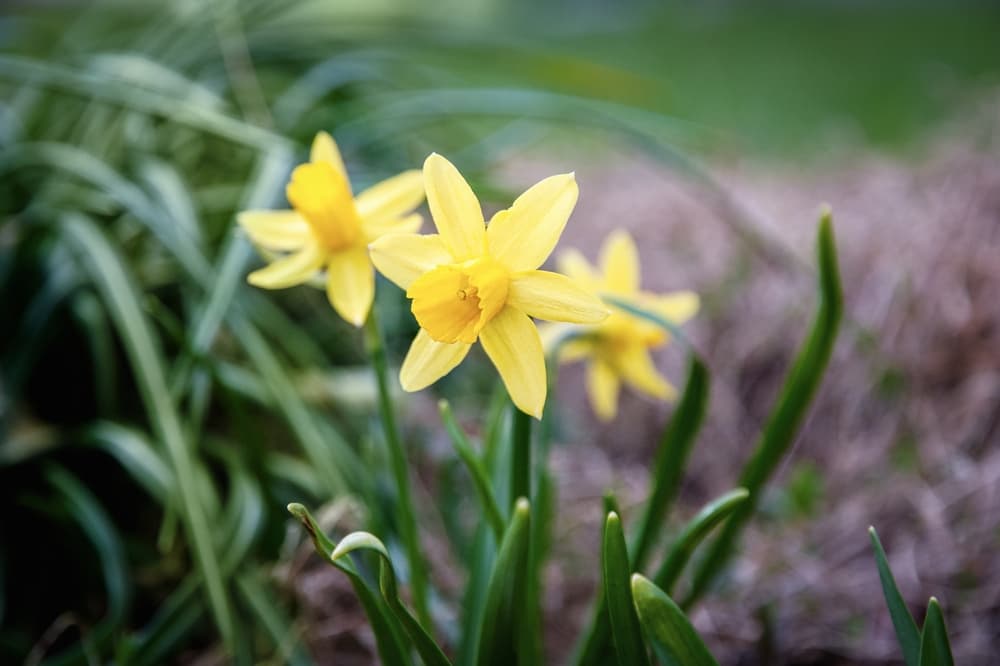
Just like the name says, this one’s an innocent-looking ‘baby;’ a miniature variety with a bright yellow cup while the tepals are white with yellow bordering.
4) ‘Pheasant’s Eye’
This arresting variety has snowy white tepals set off by a multi-hued corona that is greenish-yellow showing distinct ‘eyes’ and with red fringeing.
5) Sorbet Daffodil
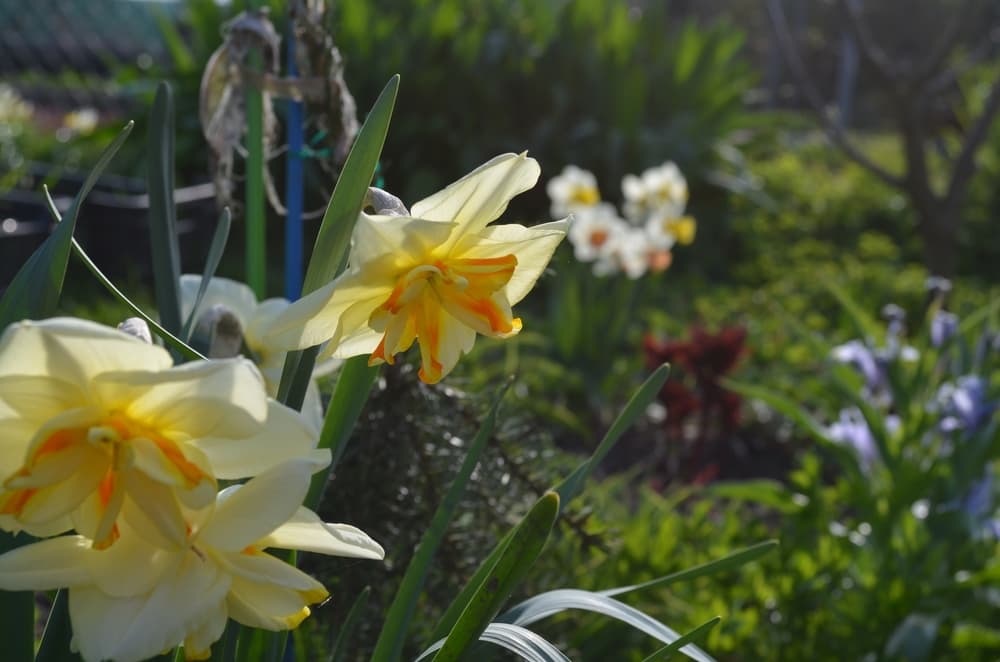
Framed by rounded, creamy white tepals, this lovely variety has a whorl-like split corona with each one having a unique set of yellow, orange, and vermilion ‘brush strokes’.
6) ‘Hillstar’
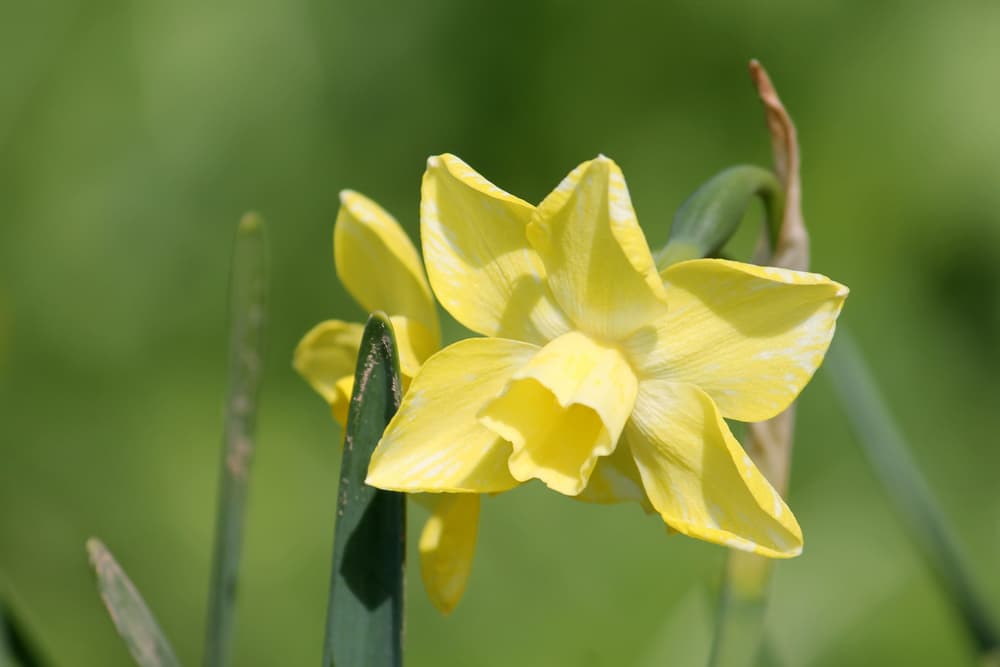
This work of art looks like it is hand-painted, for the well-shaped cup is yellow turning into white but the tepals are white at the centre turning yellow at their halfway point.
7) ‘Beautiful Eyes’
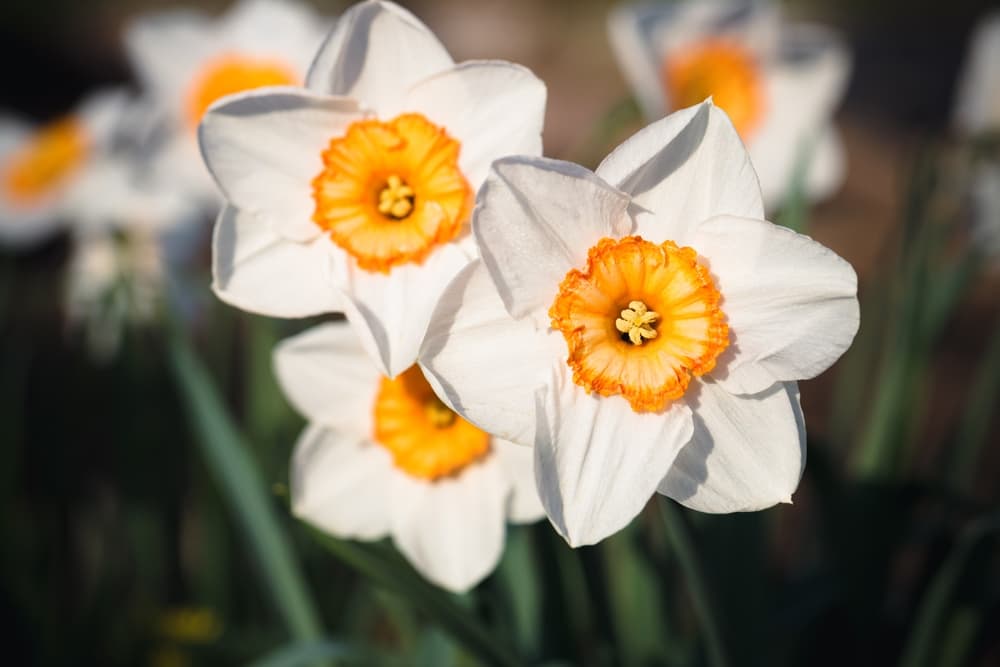
‘Beautiful’ is the key word for this bloom which usually has off-white ivory tepals and a small cup coloured deep orange and a pronounced eye.
8) ‘Le Torch’
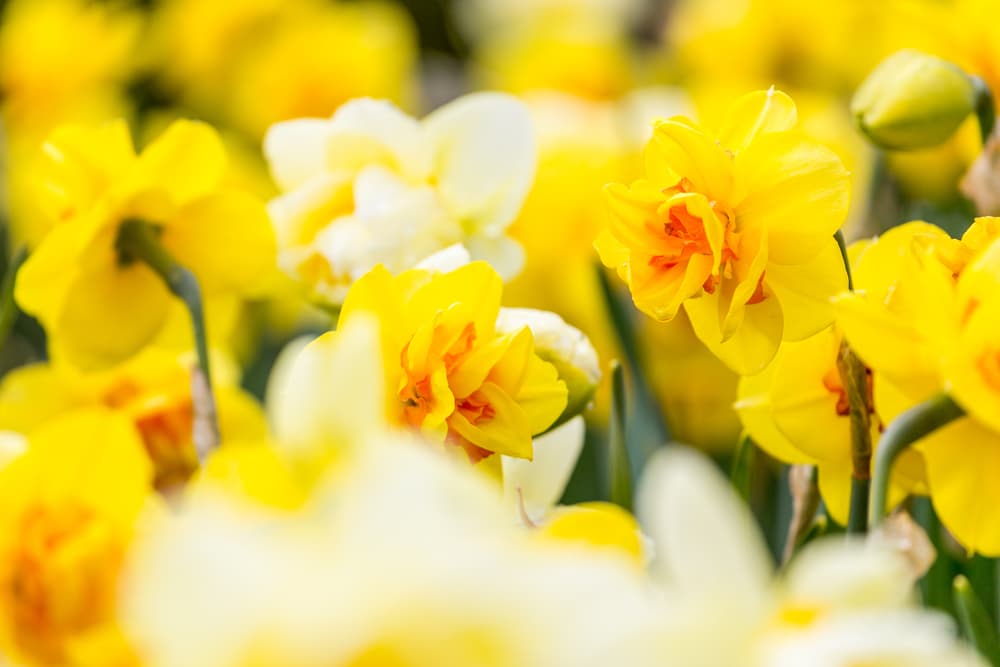
This stunning double flower is rose-like in its complexity and has both tepals and corona of an intense yellow hue splotched with equally deep orange.
9) ‘Reggae’
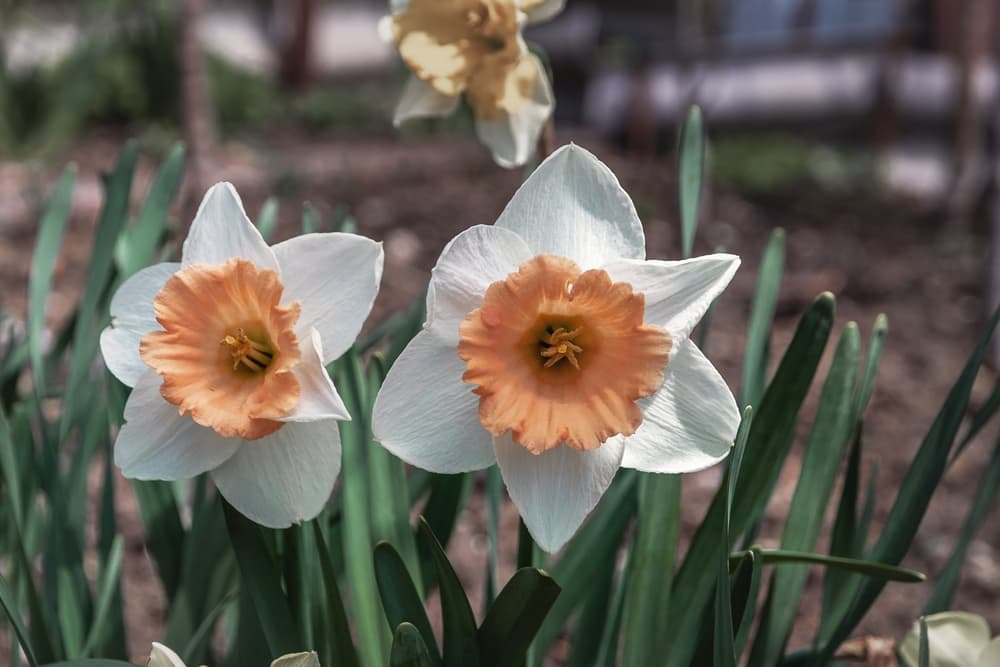
Belying its name, this is a gentle and sedate variety with flared white tepals surrounding a pronounced corona with a pastel, nearly faded, salmon-pink shade.
10) ‘Mission Bells’
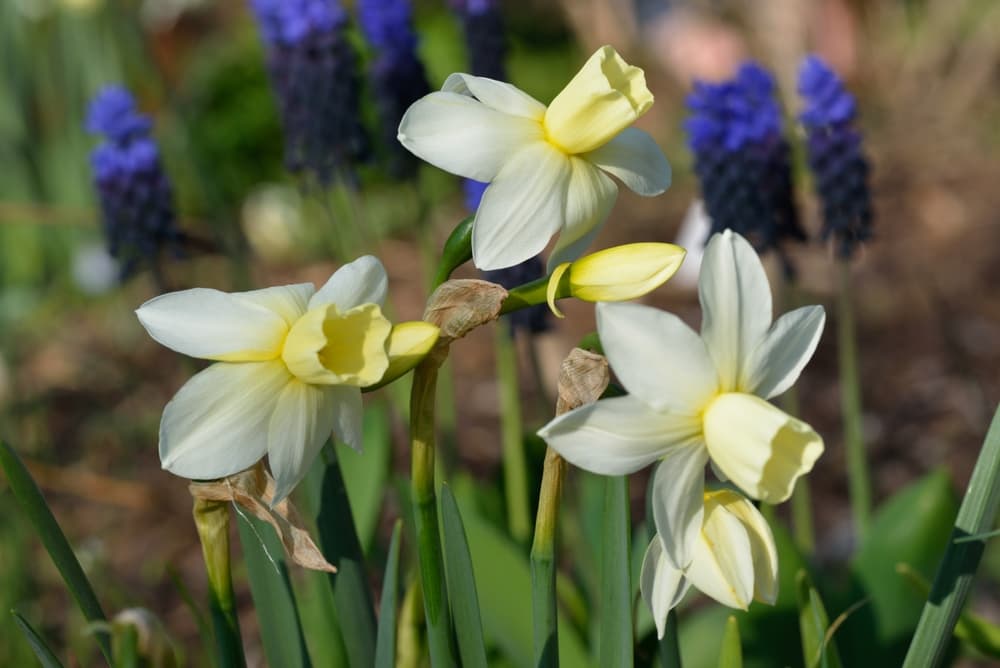
Pure white with a touch of yellow at the centre, and so superbly formed with all its elements in perfect proportion and balance that it is as if sculpted to adorn Paradise.
References
- 1Narcissus. (n.d.). Plants of the World Online. Retrieved May 22, 2023, from https://powo.science.kew.org/taxon/urn:lsid:ipni.org:names:1558-1#children
- 2Horticultural classification of daffodils. (n.d.). Royal Horticultural Society. Retrieved March 14, 2023, from https://www.rhs.org.uk/plants/pdfs/plant-registration-forms/daffhortclass.pdf

